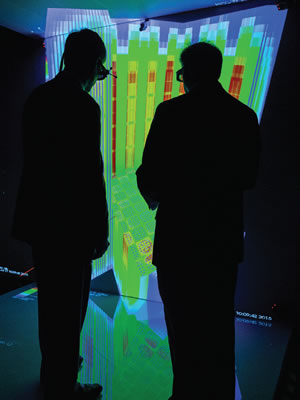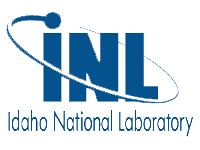CASL: Giving Nuclear Energy More Power
Nuclear reactors generate 20% of America’s electricity. However, due to unfavorable economic conditions, many of today’s operating reactors could be shut down in the next decade.
To address this challenge, in 2010 the US Department of Energy (DOE) established the Consortium for Advanced Simulation of Light Water Reactors (CASL). Based at Oak Ridge National Laboratory (ORNL), CASL is DOE’s first Energy Innovation Hub—an integrated research center focused on a single topic, with the objective of rapidly bridging basic research, engineering development, and commercialization.
Mission and Impact
CASL is a collaboration of the nation’s leading scientists, institutions, and supercomputers, with an aggressive 10-year mission to confidently predict the performance of existing and next-generation commercial nuclear reactors through comprehensive, science-based modeling and simulation. Real-world impacts include
- Improving efficiency in nuclear power production by reducing unanticipated plant outages and enabling future increases in operating power, resulting in additional power generation.
- Lowering costs by better understanding how long fuel can reside in a reactor. With improved reactor and fuel burnup estimates, energy providers could save millions of dollars annually.
- Enhancing safety through evaluation of new fuels that can better endure the severe conditions within a reactor.
- Extending the life of existing reactors through improved prediction of the lifetimes of key structural components
“Looking” Inside a Nuclear Reactor
The CASL project has developed and tested what amounts to a virtual nuclear reactor. VERA, or the Virtual Environment for Reactor Applications, can simulate the operation of an entire reactor down to the characteristics of a single fuel rod, significantly exceeding the resolution of industry tools. Because some reactors have more than 51,000 rods, predicting individual rod behavior can greatly enhance safety and performance.
VERA has accurately simulated the entire 20-year history of the Tennessee Valley Authority’s Watts Bar Unit 1 nuclear reactor, proving the software’s groundbreaking capabilities. When the Watts Bar Unit 2 reactor started up in 2016, VERA was used to perform hour-by-hour simulations of the new plant’s first six months, with predictions providing important data to support the achievement of full-power operations.
As new reactors come online and old reactors age, such simulations will give energy companies a chance to accurately predict the future performance of their plants—and an opportunity for improvements to avoid costly shutdowns.














